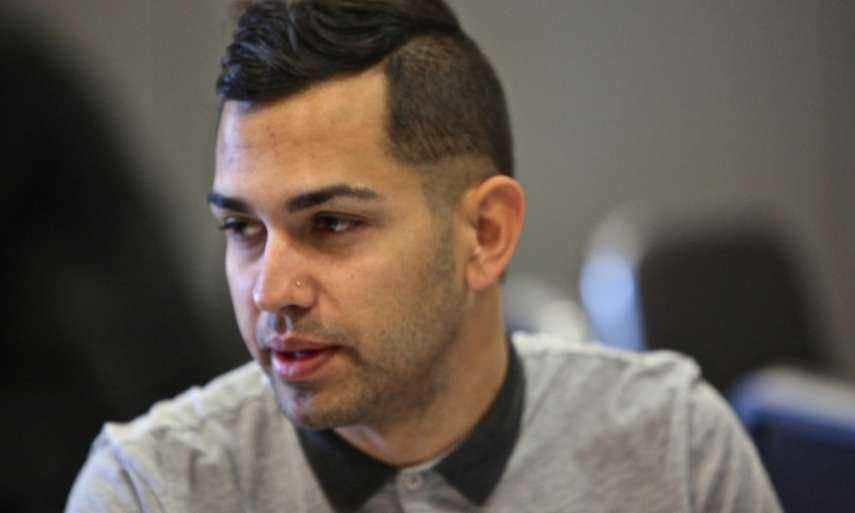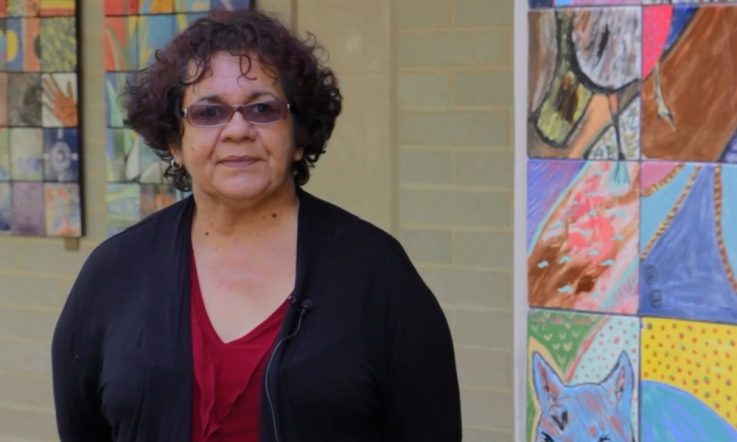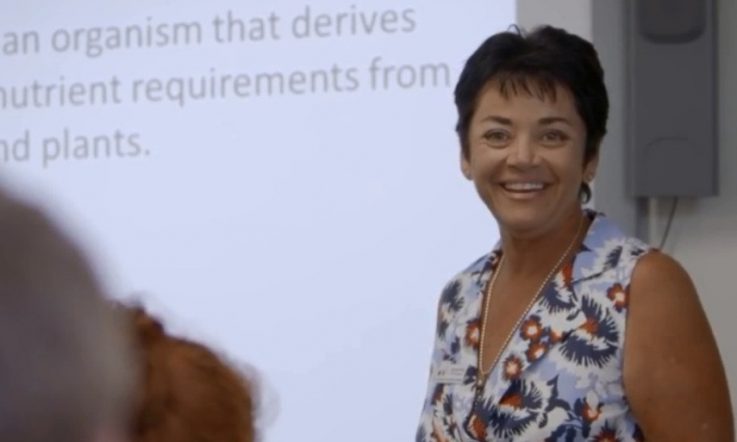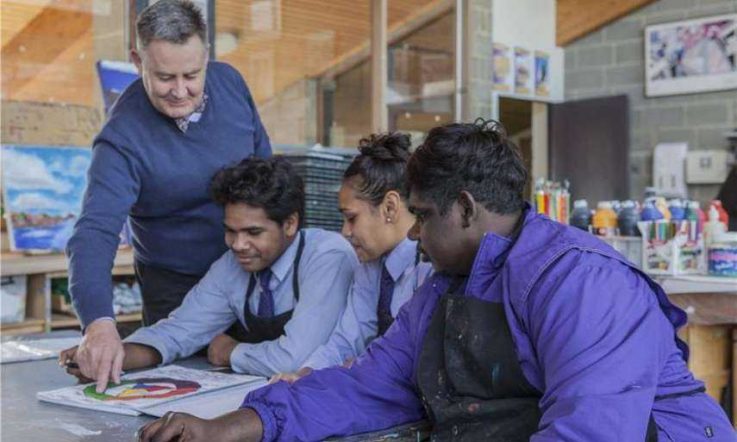A project aimed at lifting the number of Aboriginal and Torres Strait Islander teachers and principals in Australia has released a detailed workforce profile it hopes will lead to lasting reform.
It confirms Aboriginal and Torres Strait Islander teachers are significantly under-represented in schools. Using data from 2012, researchers estimate there are 3700 Aboriginal and Torres Strait Islander teachers, comprising just 1.2 per cent of the total school workforce. That compares to a student cohort of 4.9 per cent.
The More Aboriginal and Torres Strait Islander Teachers Initiative (MATSITI) report, published today, is described as an ‘unprecedented benchmark study'.
'For the first time we can accurately quantify the numbers of Aboriginal and Torres Strait Islander teachers in our schools, and plan effective workforce reform strategies for our people with the confidence they are based on robust evidence,' MATSITI Director, Professor Peter Buckskin, tells Teacher.
The academic says that although the total number of Indigenous teachers identified by the National Teacher Workforce Dataset (NTWD) was larger than anticipated, a three-fold increase by 2018 would be required to meet the Close the Gap employment target (in the education sector), as agreed by all Australian governments.
The $7.5 million, four-year MATSITI project is managed by the University of South Australia and funded by the Australian Government.
Buckskin believes the detailed workforce profile will inform several objectives. 'Firstly, the need for a proactive assertive recruitment campaign amongst Aboriginal and Torres Strait Islander communities and their schools promoting the teaching as a career of choice.
'Secondly, increasing the visibility of employment reform required to attract Aboriginal and Torres Strait Islander people to work with school jurisdictions and improve retention and career opportunities for those already employed.
'Thirdly, to secure long term commitment from teacher education providers to stem attrition rates and increase retention and graduation rates of Aboriginal and Torres Strait Islander enrolments to enable the diversity of our teaching population to better match that of students.'
Buckskin says it also tackles the common misconception that Aboriginal and Torres Strait Islander teachers are predominantly living and working in remote communities: the NTWD shows only 10.5 percent are working in remote or very remote areas.
'Surprisingly, Aboriginal and Torres Strait Islander teachers have a higher completion rate of Bachelor degree (60 percent) than the total teaching workforce (54 percent), challenging a common stereotype,' he adds.
'Another encouraging statistic is that the proportion of Aboriginal and Torres Strait Islander principals to Aboriginal and Torres Strait Islander teachers is the same as that of the entire teaching workforce (i.e. that Aboriginal and Torres Strait Islander Teachers can progress to leadership positions at the same rate as non-Indigenous teachers).'
The report found Aboriginal and Torres Strait Islander teachers are more likely to be working in low SES schools: 39 per cent work in schools in the lowest SES quintile; for non-Indigenous teachers the figure is 23 per cent. At the other end of the scale, 10 per cent work in schools in the highest SES quintile; for non-Indigenous teachers the figure is 20 per cent.
Buckskin says that's not surprising, given that 'a disproportionate percentage of our people are living in low SES locations with high unemployment ... experiencing the detrimental effects of poverty' and Aboriginal and Torres Strait Islander teachers have a strong sense of community and commitment to making the schooling of Indigenous students more culturally appropriate.
Other findings from the MATSITI Aboriginal and Torres Strait Islander Teacher Workforce Analysis report include:
- The median age of Aboriginal and Torres Strait Islander teachers is two years less (43 years of age) than for all teachers (45 years of age);
- 77 per cent of Aboriginal and Torres Strait Islander teachers are female, slightly higher than the national average of 72 per cent;
- Aboriginal and Torres Strait Islander teachers are more likely to be teaching in low SES schools than all teachers;
- There are 78 Indigenous principals, comprising a similar percentage (3.8 per cent) of all Indigenous teachers as that (3.9 per cent) of all principals to all teachers;
- The median number of years with current employer for Indigenous teachers is 11 years, compared to 13 years for the total teacher workforce;
- Indigenous teachers work in primary schools in a similar proportion (55 per cent) to the total teacher workforce (54 per cent);
- Indigenous teachers have higher completion rate (60 per cent) of a Bachelor Degree than all teachers (54 per cent), but are less likely to have completed postgraduate studies;
- Between 50 per cent and 60 per cent of Aboriginal and Torres Strait Islander education graduates in the last five years have gone on to gain employment in teaching positions in schools.
On recruitment, Buckskin praised the New South Wales education department as a 'standout jurisdiction'. '[It] recently achieved a milestone of 1000 Indigenous teachers through a mix of strategies. These include reach into Aboriginal communities, scholarships, targeted recruitment and placement and early career support.
'This demonstrates that this agenda of creating a teaching workforce that better matches the diversity of students is achievable.'
The MATISITI team now plans to present its findings to workforce officials and Indigenous education units in school jurisdictions as part of its push for recruitment and retention strategies.
In the tertiary sector, 20 universities have already signed an agreement through the Australian Council of Deans of Education to improve the engagement and success of Indigenous students.
Buckskin says the team will continue to work with schools, faculties of education and Indigenous higher education units to 'improve the pipeline from year 12 to enrolments in Initial Teachers Education programs and the retention and completion of Aboriginal and Torres Strait Islander teacher education students'.
A snapshot of Aboriginal and Torres Strait Islander teachers is planned for 2015, giving a longitudinal perspective of trends and helping set future benchmarks.
The MATSITI report follows its submission in June to the Australian Government's Teacher Education Ministerial Advisory Group (TEMAG).
The submission proposes five priorities for reform and includes recommendations for Initial Teacher Education providers to expand culturally appropriate and flexible pathways for Indigenous people, all graduates to complete a 'comprehensive sequence' of Aboriginal and Torres Strait Islander studies during their education degree, and a national review considering the challenges of preparing teachers to work in remote Indigenous communities.
MATSITI has previously published a Teacher Workforce Scoping Plan - a blueprint for a national effort to increase the number and capacity of Indigenous teachers and leaders in the government and non-government school sectors.
The More Aboriginal and Torres Strait Islander Teachers Initiative (MATSITI) report was published today. To read the report in full, click the link.



